Nov 6, 2016 | installation, public art

Hanieh Alizadeh, Mahmoud Ganji, Mehdi Rabie (EOT design studio). Whispering Rainbow, 2012. Satin ribbon. Hefdah-E-Shahrivar Street, Tehran. Photo via EOT design studio’s Facebook.
When every object we touch is factory-made, are manufactured environments somehow more real? Both Alexandra Kehayoglou’s Shelter for a Memory and EOT design studio’s Whispering Rainbow are knowingly synthetic; they mimic the earth’s beauty as a tribute by celebrating some of the most joyful natural elements. Shelter for a Memory’s delight arises from a collaboration between man and nature — a wooden swing that within the myth of the scene hangs from a towering, enveloping tree. In a similar way, Whispering Rainbow is a collaboration through appropriation, a reenvisioning of a rainbow remade in 150 rolls of satin ribbon (a potentially natural medium). When the wind blew the satin shook to create the sound of rain, adding an audible dimension to the rainbow’s recreation.
Whispering Rainbow evokes only happiness, and its installation across a public street in Tehran makes seeing it fun and serendipitous. Shelter for a Memory differs in both respects: viewers enter its space with certain expectations because of its place in a gallery, and the scene’s deliberate edges create a conceptual frame that conveys a sense of disillusionment and inauthenticity when seen from a distance. But its title acknowledges the potential for fiction in nostalgia, and Kehayoglou creates her wool rugs through a hand-tufting process that lends a truth to the piece. Together, both installations ask: can an artificial environment carefully crafted by human hands be more real than the nature it imitates?
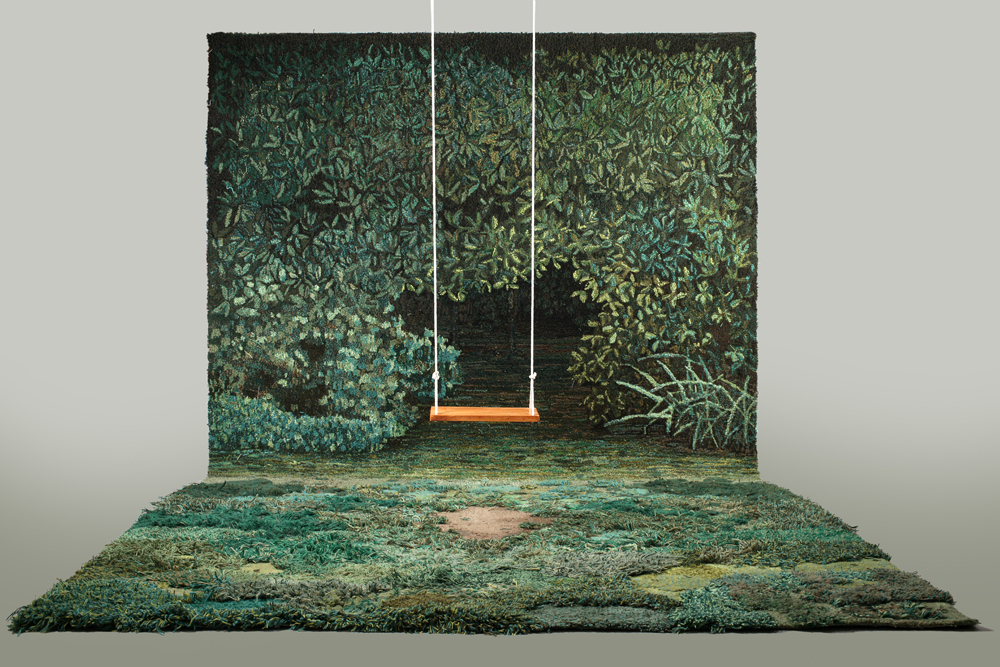
Alexandra Kehayoglou. Shelter for a Memory, 2012. Wool, paint, wood, rope. Photo: Artist’s website.
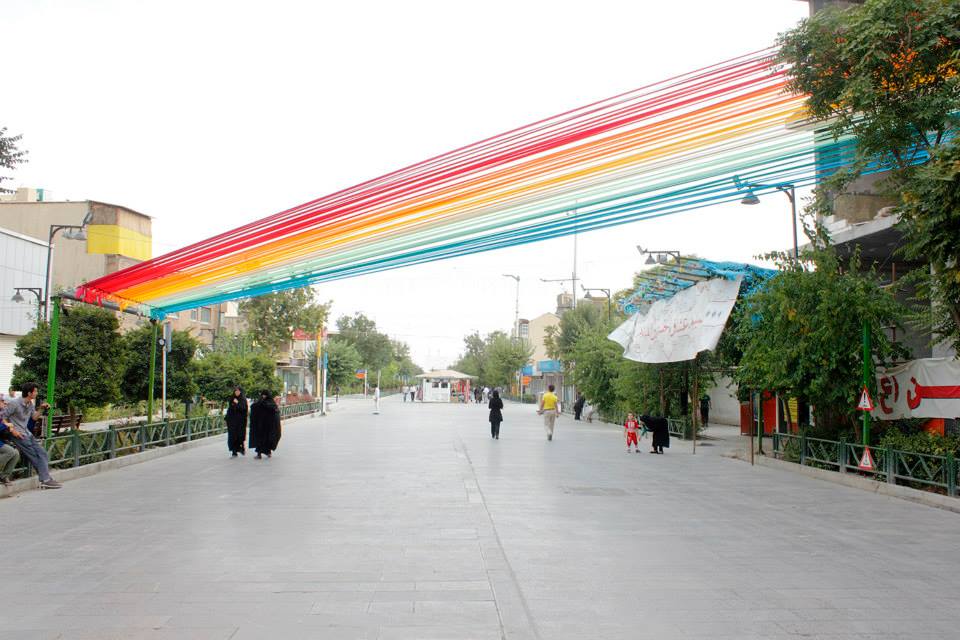
Hanieh Alizadeh, Mahmoud Ganji, Mehdi Rabie (EOT design studio). Whispering Rainbow, 2012. Satin ribbon. Hefdah-E-Shahrivar Street, Tehran. Photo: EOT design studio’s Facebook.
This text was originally written for a class titled Installation Art: Design & Change at Pratt.
You can also read more pairings on the Pairings: Blog set up by our professor, Kim Connerton, PhD.
Mar 17, 2016 | installation, political art
I’m taking a class at Pratt called Installation Art: Design & Change, and we’ve been pairing up installation works as a weekly assignment. This is my first one!
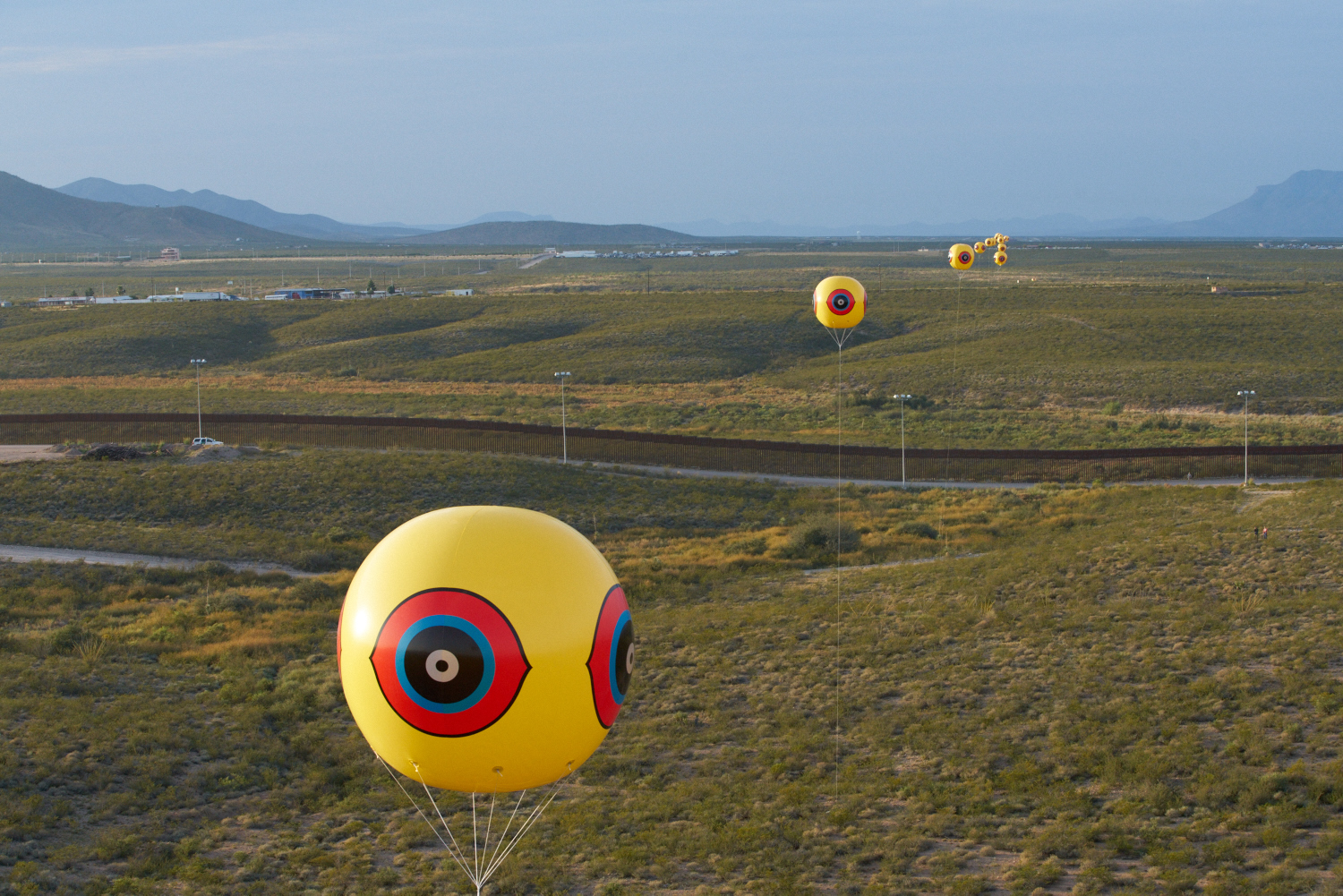
Postcommodity, Repellent Fence / Valla Repelente, October 9-12, 2015. Between the US/Mexico border cities of Douglas, Arizona and Agua Prieta, Sonora . Twenty-eight tethered balloons, 10 x 10 feet each.
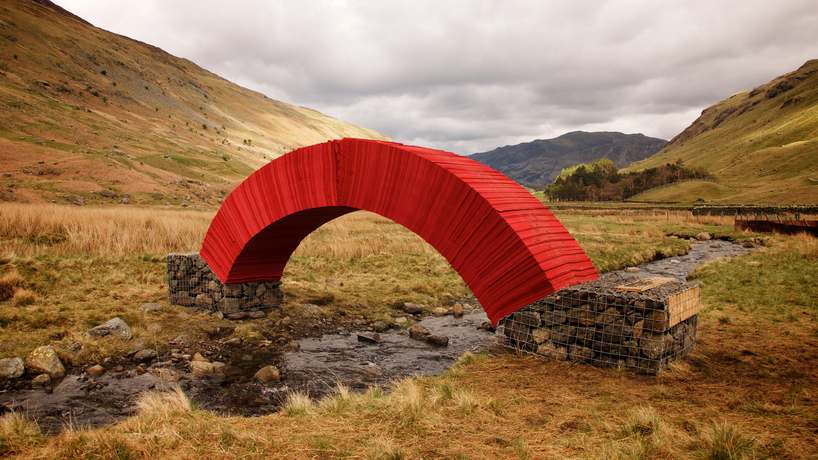
Steve Messam, PaperBridge, May 8-18, 2015. At the top of the Grisedale Valley, Patterdale, Cumbria, UK. 20,000 sheets of paper, four tons of found stone, 16.4 x 5.9 x 2.95 feet.
Both temporary installations in different kinds of wilderness, Postcommodity and Steve Messam’s work cross very different boundaries. Messam’s traverses a natural barrier while Postcommodity’s bisects a manmade one. Repellent Fencewas a community-backed two-mile long fence that traced an ancient trade route from Mexico through Arizona, nearly perpendicular to the border. The “scare-eye” design has indigenous origins and is still used to repel birds. Here the design seems to repel people—ancient indigenous travelers and their descendants in particular—warning them that the route is no longer safe because the US (a comparatively new nation) is obsessed with border security. At the same time, the two-mile installation sutures the divided nations together again.
While Repellent Fence confronts conceptual boundaries, Paperbridge defies physical ones. The paper’s wood pulp material mimics the wood that typical bridges are made of, while its bright red color lights up the landscape. Both works defy gravity in their own way. Repellent Fence flies 100 feet above the desert landscape and Paperbridge uses pressure to push out and up to allow safe passage over a stream in the northern UK. But the motivations behind the creation of these installations could not be more different. Postcommodity is a collective of three indigenous artists using projects like Repellent Fence to bring attention to oppressed Native Americans and migrant workers, while Steve Messam was commissioned to create Paperbridge.
I learned about Repellent Fence through an interview with the artists I worked on for ART21 Magazine.
You can also read my classmate’s pairings for this week on the Pairings: Blog set up by our professor, Kim Connerton, PhD.
Mar 25, 2013 | installation, sculpture
A silver hand stretches from the sky, cut off just below the elbow and grabbing hold of an older black Fiat 500, stopping the car in its tracks. But there’s no driver in the car, so perhaps before it wasn’t moving. After all, the hand’s grip is loose and casual, long thick silver fingers folded over windows – fingers the size of legs, like they belong to a five-footed monster with no face.
It’s not a monster, but a child’s hand, holding the car like a toy, playing with it along our teeny tiny streets. The name comes from what most children say while they play with toy cars: “vroom vroom,” evocative of the way we all sort of speak our lives into existence, validating with words that end up being just as small as we are.
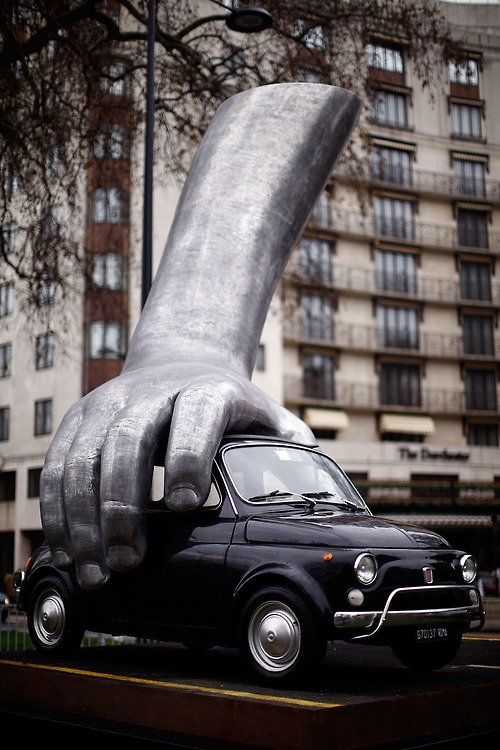
Because how much control do we really have anyway? If our brakes fail and smash us into a building, how much difference would it make knowing that a giant metal baby was in charge of all the chaos? Would you trust the baby more than a bearded prophet with surviving stories?
Lorenzo Quinn uses his sculpture as a visual facility for communication, all with the goal of helping viewers develop values like understanding, tolerance, and harmony. A Roman-born artist who studied at the American Academy of Fine Arts in New York with the intention of becoming a surrealist painter, Quinn discovered his passion for sculpture at 21 and moved to Spain after the birth of his first child. Now at 47 Quinn’s sculptural works have become enormously successful, shown all over Europe since the late 80s.
“I make art for myself and for people who want to join me on a walk through my dreams,” Quinn said, “The way we live our own lives, is paramount. That is why most of my work has to do with values and emotions. ”
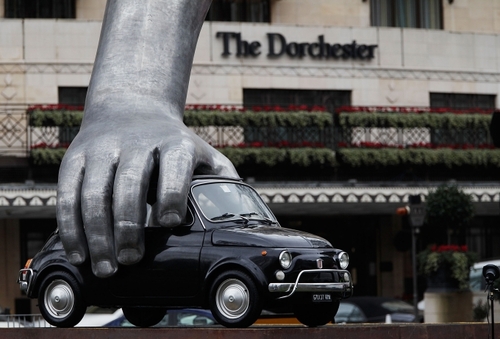
“Vroom Vroom” was initially presented at the Institute of Modern Art in Valencia, Spain in the summer of 2010, and appeared that same year at the Abu Dhabi Art Fair. In January 2011 the sculpture was settled in Park Lane, London as part of the Westminister City Council’s sculpture festival.
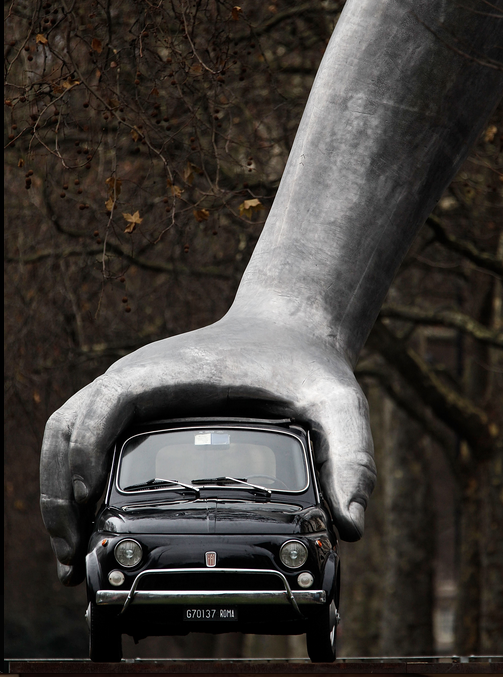
The nearly 15 feet high sculpture creates an open dialogue about our place in the world, the child’s hand indicating the littleness of it all and the title opening all sorts of other discussions about reality, awareness, and language – what does it mean to you?
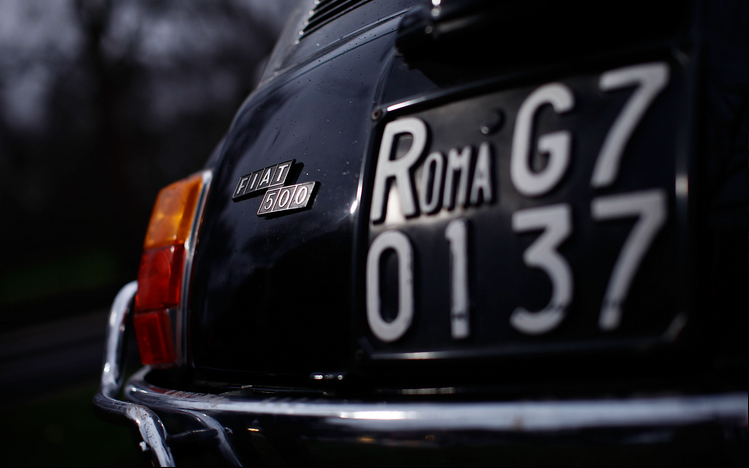
See more of Lorenzo Quinn’s work on his website.
Feb 1, 2013 | installation, interviews, painting
 |
| Sophia Ainslie’s mural in progress on 1/30/13 at the Kingston Gallery |
On Wednesday I was lucky enough to meet with Sophia Ainslie, a South African artist who’s currently working on a mural at the Kingston Gallery in Boston’s South End. Right now I’m working on
an Artscope post about this new show “in person,” but I needed to write something else too because it was just so incredible to watch that mural come to life.
 |
| Mural with projection. |
Sophia had three trained assistants painting while I was there, two up on ladders filling in bright colored sections and one standing, tracing the lines coming from a projector. The projector contained a zoomed in section of the wall’s intended design, made with a computer that was used to combine works from “Fragments,” the drawing series Sophia has been working on for the past four years.
 |
| Sophia Ainslie (right) instructing an assistant. |
She made a number of murals from this same series last year, but this is the first time she’s ever used assistants. She told me she wanted to see how much of the work she could give away, kind of like Sol LeWitt but without giving it all up – more like Frank Stella she said. She wants the concept to be hers, but she was still very particular about how the assistants painted, she trained them and walked them through the process, overseeing the wall’s development every step of the way. “I’m a painter,” she said, “I’m seduced by the architecture of paint.”
 |
| Paper works for “in person” at the Kingston Gallery |
The lined sections of this feathered, almost camouflage-like design, were inspired by landscapes, but the ones seen beneath her feet so that she’s involved in what surrounds her. The colored bits are abstracted interpretations of her mother’s last X-ray, before she made the decision against surgery for cancer at the age of 82. Sophia has been developing this series since her mother’s passing in 2009, and now the horizontal large-scale medium of the mural is allowing for a release, “This is more about a letting go,” she said, “all the other images were vertical and more about the body. This is a release of her.”
 |
| Sophia Ainslie (right) instructing an assistant. |
 |
| Mural with finished design taped up. |
See more of Sophia’s work on her website here.
And read more about this show in my Artscope post!













